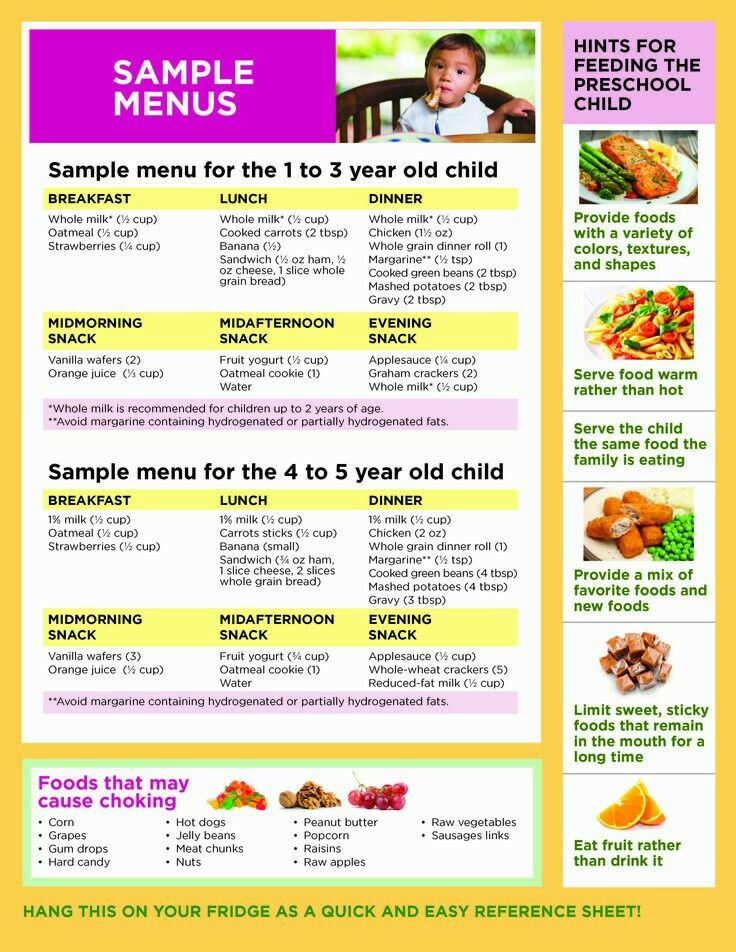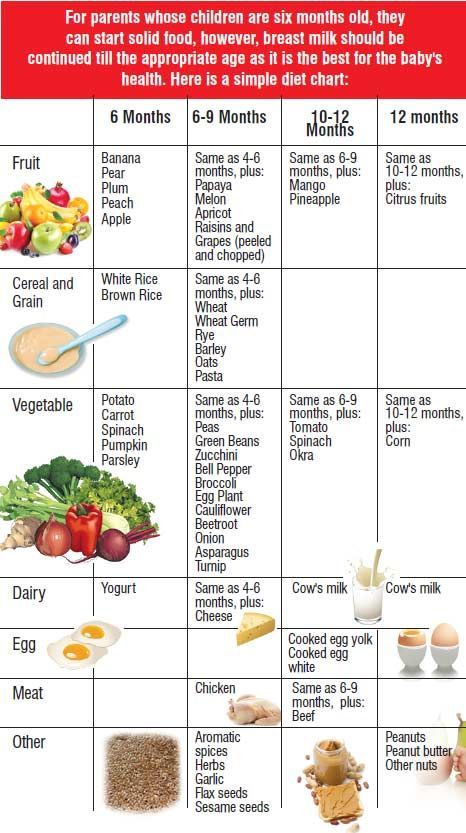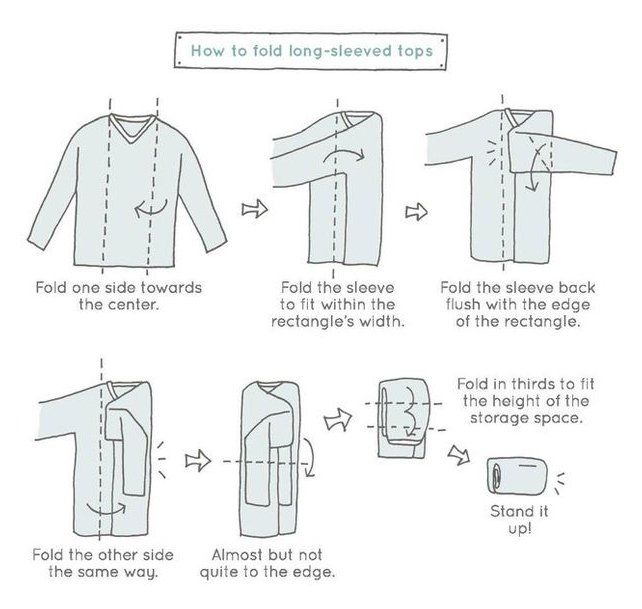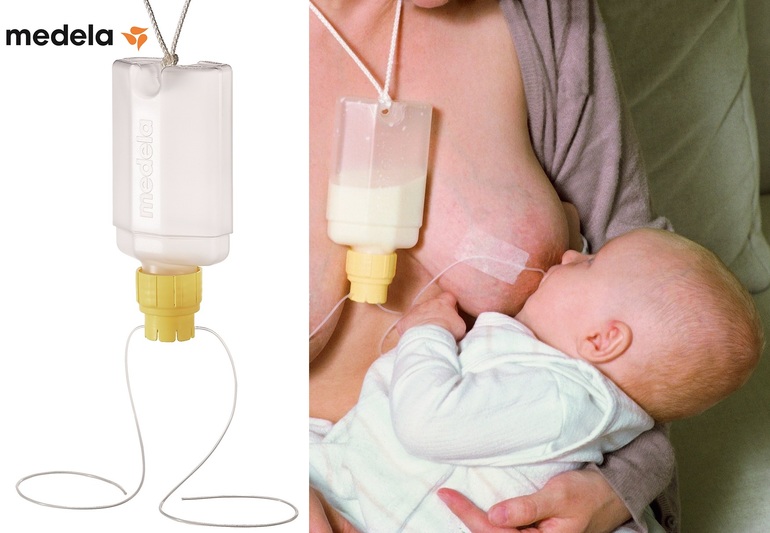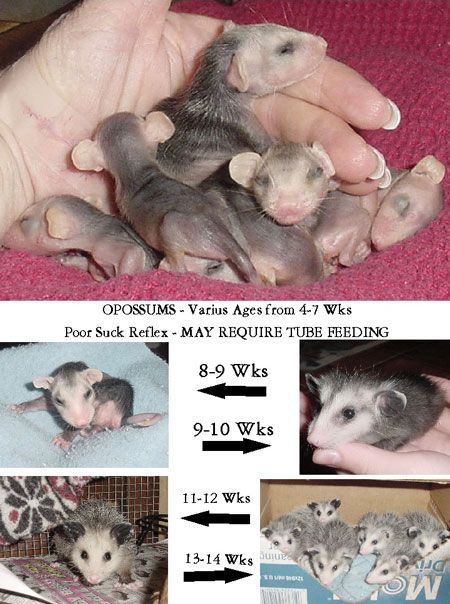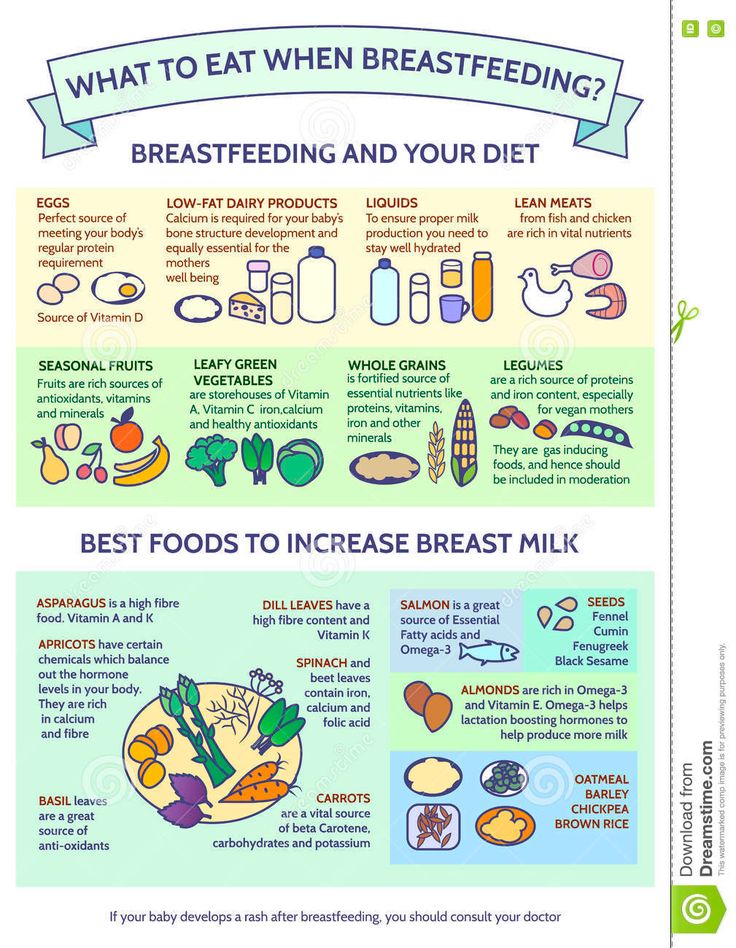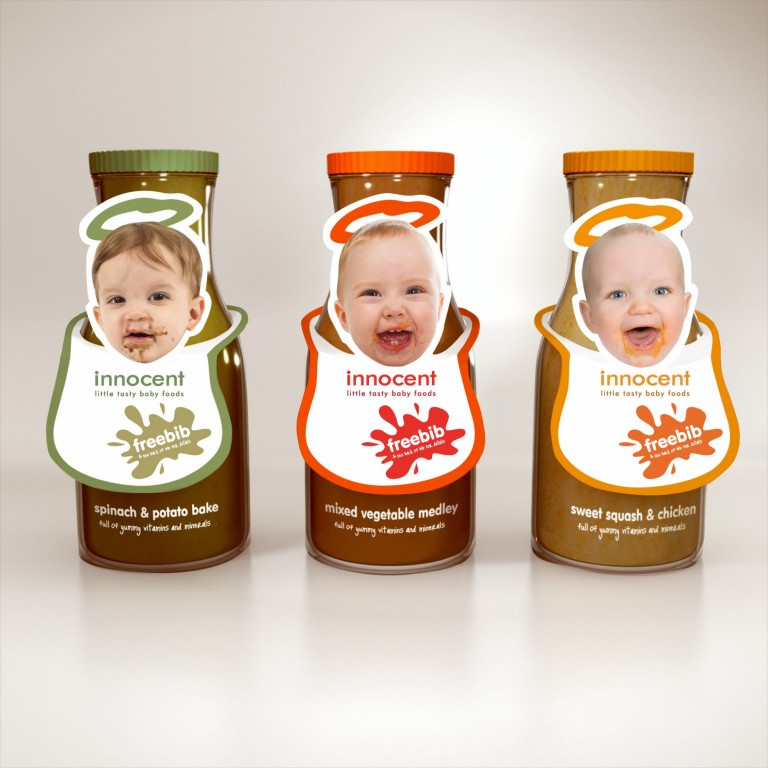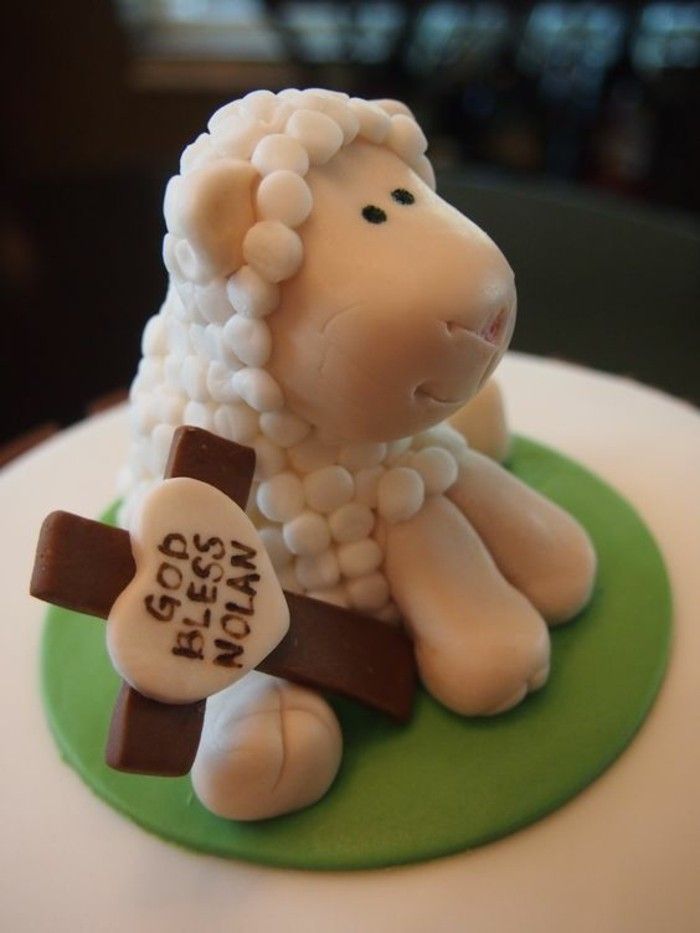Baby guinea pig food guide
How & When to Do It
25/10/2020
Hand-raising baby guinea pigs can be quite tricky and demanding. This responsibility should never be taken on lightly, and some points should be considered before deciding to hand-raise guinea pigs.
Most importantly, you need to be 100% confident that the mother guinea pig isn’t feeding her babies. Unless the mother guinea pig is known to be dead, there is a good chance that she is in fact feeding her babies. In general, mother guinea pigs do not constantly tend to their babies the way we might think.
Guinea pig mothers feed their babies only a few times per day and then leave them alone to their own devices. Guinea pigs are born being able to walk, see and hear, and most of them will start nibbling on solids within a few days, as well as drink milk from their mum.
Signs That Baby Guinea Pigs Have Been Neglected From Their Mother
If you think the mother guinea pig is “ignoring” her litter, have a look at the condition of the babies. If the baby’s tummies are round and full-looking, they are active and bright, warm and chatting away, making little noises, then the mother guinea pig is likely feeding them.
If the babies are cold, lethargic or have shrunken bellies, then you may have to intervene. It is a good idea to weigh the babies daily to make sure they are growing and gaining weight appropriately.
Handling Baby Guinea Pigs
Before handling the babies, wash your hands well. This not only helps to remove bacteria but also eliminates any smells from other objects or animals that can stress the babies. Once they’re clean, rub your hands in some clean, fresh hay and on the mother guinea pig’s fur to scent your hands.
Assisted Feeding
Before starting any syringe or bottle-feeding, it is worth trying to assist the babies with natural feeding.
If the mother guinea pig will tolerate it and isn’t too stressed, you can try to gently, but firmly hold the mother guinea pig in your arms and gently try to put each baby onto one of her nipples to self-feed.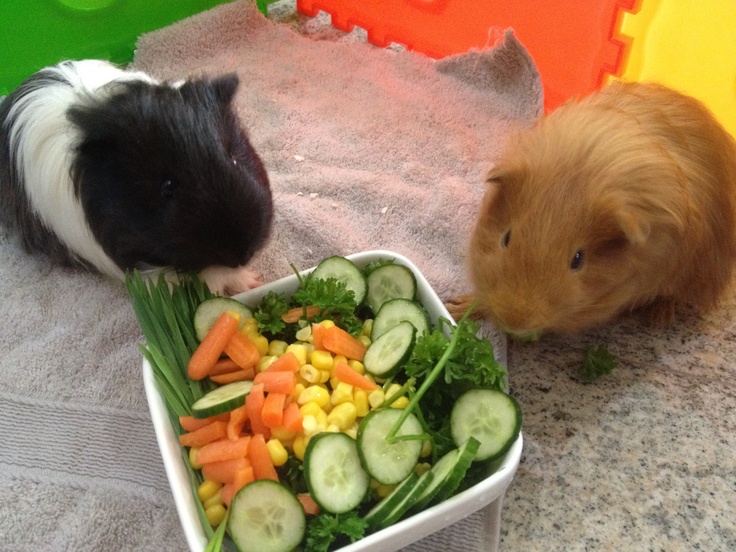 Sometimes it is helpful for the babies if a small amount of milk is expressed from the nipple to entice the baby to suckle. If you still don’t have any luck, then you may need to start to assist feeding or hand-raising.
Sometimes it is helpful for the babies if a small amount of milk is expressed from the nipple to entice the baby to suckle. If you still don’t have any luck, then you may need to start to assist feeding or hand-raising.
What Formula Should I Feed Baby Guinea Pigs?
We recommended the Wombaroo Guinea Pig Milk. It is a premium product that contains vitamin C (which is very important for young guinea pigs). It comes as a powder which can be mixed with warm water to make the milk for the babies. All the mixing instructions are on the box.
Wombaroo Guinea Pig Milk can be purchased from The Unusual Pet Vets. Alternatively, some other veterinary clinics and larger pet shops may also stock it.
Do I Need Additional Feeding Supplies?
In addition to the feeding formula, you will also need some small plastic syringes for feeding the milk to the babies. These can be purchased from our clinics or most pharmacies. You can also buy small plastic feeding bottles and plastic teats from large pet shops, but you will need to buy the smallest teat possible, as usually the puppy and kitten ones are generally too big.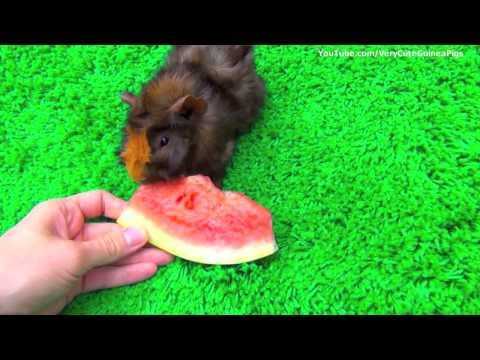 Most baby guinea pigs will feed from a syringe without a problem.
Most baby guinea pigs will feed from a syringe without a problem.
We recommend having a small scale to weigh the baby guinea pigs and for daily weight monitoring. The amount of milk to feed is dependent on the baby’s weight.
On the Wombaroo Guinea Pig Milk box, there is a weight chart and the number of mls of milk to be fed over 24 hours. Depending on how much the baby guinea pig will take in one feeding session will depend on how frequently you have the feed them.
Feeding Procedure
Step 1
Make sure all your syringes and bottles have been thoroughly washed before use.
Step 2
Baby guinea pigs are wiggly and unpredictable. They jump suddenly and unexpectedly. A drop of only one or two feet can be fatal, so make sure they are being fed and kept in a safe environment.
Step 3
Hold the baby in its normal sitting position in one hand, and the bottle/syringe in the other. Otherwise, have the baby guinea pig sitting (safely) on the floor or a table and feed with the bottle/syringe slightly vertically in front.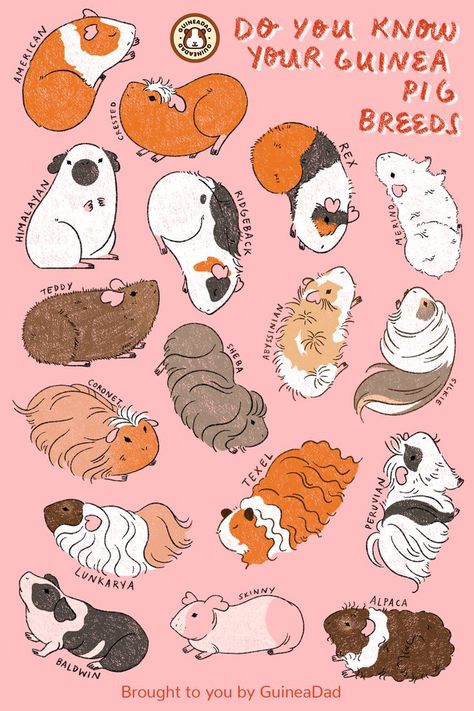
Step 4
Babies often resist feeding at first, and you must overcome the temptation to force-feed. If the baby doesn’t accept the teat or syringe, then wet the baby’s lips with a drop of warm formula so it licks it off. Once it has swallowed that, repeat the procedure over and over. Be persistent and gentle. The baby will soon learn about feeding time and will generally learn to take the formula willingly despite not doing this on the first feeding.
Step 5
Do not be too forceful and squeeze too much formula into the baby guinea pig’s mouth. They can inhale milk quite easily, so drip the formula slowly for the baby to lick up.
Step 6
If the baby grabs the teat and begins suckling, allow him to do so without adding any pressure yourself. The baby should be able to suckle with enough strength to empty the bottle or syringe without any help from you. If you provide extra force, the baby may accidentally aspirate formula that’s coming in too fast.
Step 7
If the babies do not suckle, it’s not a significant problem.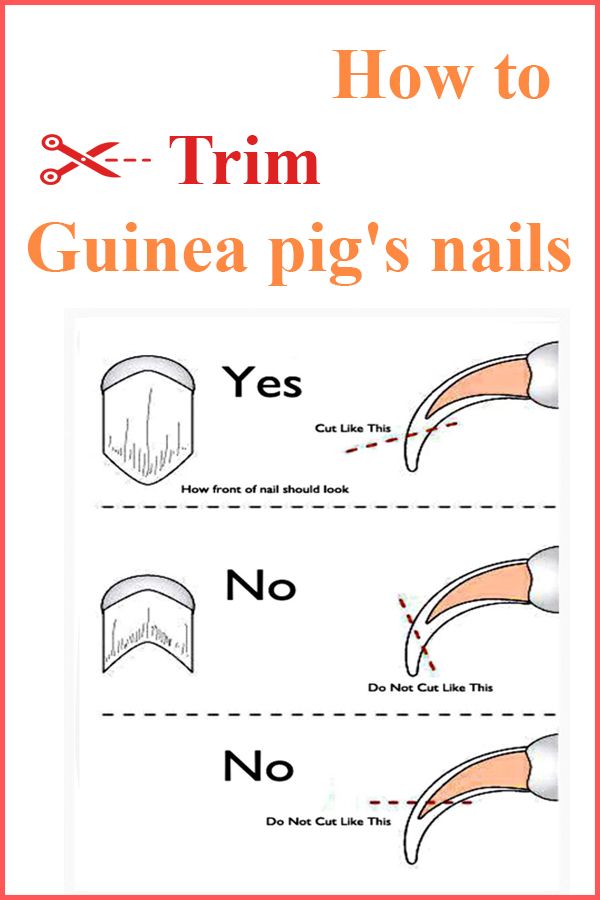 Most will learn to lap or sip from the tip of the teat, and this is safer, in reducing the risk of aspiration. Try to hold the teat or syringe tip sideways or down-pointed, relative to the mouth, to further reduce the risk of aspiration.
Most will learn to lap or sip from the tip of the teat, and this is safer, in reducing the risk of aspiration. Try to hold the teat or syringe tip sideways or down-pointed, relative to the mouth, to further reduce the risk of aspiration.
Do Baby Guinea Pigs Need to Be Kept Warm?
It is best to keep the babies in a warm, quiet place and in a small box or carry cage. For heating, two or more babies usually snuggle to keep each other warm. However, if there’s only one baby, a warm water bottle or heat pack wrapped in a soft towel can provide an excellent heat source but be sure the guinea pig can crawl away from the heat if it gets too warm.
A Tip on Toileting
Many newborn mammals cannot urinate or defecate on their own. Most baby guinea pigs will require the stimulation of the mother’s grooming tongue on their bellies and genital region to release a stream of urine and faeces.
To mimic this behaviour use a cotton ball moistened with warm water, and gently tap or rub the urogenital area until you feel the baby’s abdominal muscles tense and a stream of urine is released.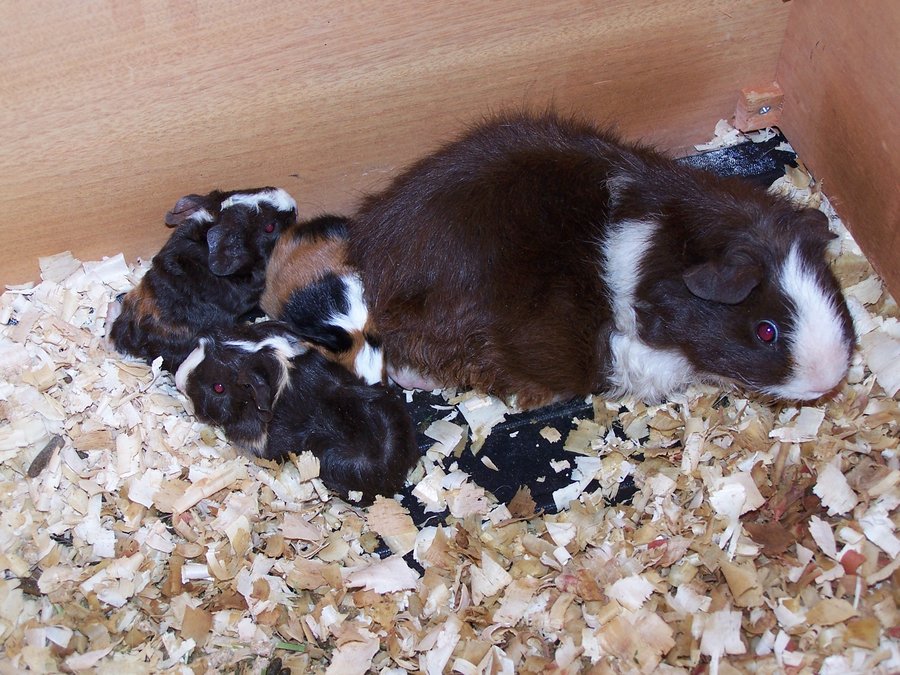 Getting a urination response may take 15-20 seconds of stimulation, or even more.
Getting a urination response may take 15-20 seconds of stimulation, or even more.
When Are Baby Guinea Pigs Weaned?
A mother guinea pig generally feeds her babies for about 3-4 weeks, gradually decreasing the frequency of feedings until they lose interest. Your baby guinea pigs will start to nibble solid food from only a few days old. You can start introducing them to timothy and oaten hay, pellets, as well as small amounts of green vegetables and water in a shallow dish from when they are born, but this does not mean they are ready to be weaned. Once they start to eat solid foods it is even more critical that you continue the feeding formula to help control the growth of potentially harmful pathogens as the babies introduce new bacteria into their systems.
If the babies still beg for nursing by the age of 5 – 6 weeks, you can begin to dilute the formula with clean drinking water. Start with 25% water to 75% formula, and gradually decrease the percentage of milk until the babies lose interest.
Should the Male and Female Baby Guinea Pigs Be Separated?
Male and female baby guinea pigs should be separated from each other at 3-4 weeks of age to prevent any early pregnancies. Guinea pigs can then be sterilised from 16 weeks.
At What Age Can Baby Guinea Pigs Be Re-homed?
Baby guinea pigs can then be rehomed to new families by eight weeks of age, as long as fully weaned and eating solids well on their own. It is a good idea to have the babies examined by a guinea pig vet prior to sending them off to their new forever home.
For more information on hand-raising baby guinea pigs, contact your local Unusual Pet Vets team.
Testimonials
Informative Service
Very nice and informative service. Lovely vet practice, will definitely recommend to others.
Joanne Marsden
Wonderful and Knowledgeable
Wonderful and knowledgable vet. Took time to thoroughly check over my rabbit and answer all the questions I had. Would recommend to other rabbit owners.
Would recommend to other rabbit owners.
Leona Hazel
Caring and Compassionate
Highly recommend, caring and compassionate no matter how small your pet. Thank you to the unusual pet vets for treating our very sick little mouse Moon, she came back to full health and is now enjoying life in a new home with new cage mates.
Kali and Co
Simply The Best
Cannot speak highly enough of the caring and lovely staff at UPV Osborne Park. Particularly to Dr Kelly for the wonderful treatment and compassion she displayed caring for my much loved
Bugz. Definitely recommend this practice. Simply the Best.
Stephen Waddell
A Great Vet For Exotic Pets
It’s a great vet for exotic pets, we would like to thank Dr Kiara and the nurses for all the help they have done for the bunnies especially when they have been unwell.
Gretel – Thankyou for all the tips and advice on what and what not to do with the bunnies.
We will definitely be recommending to all our exotic animal friends.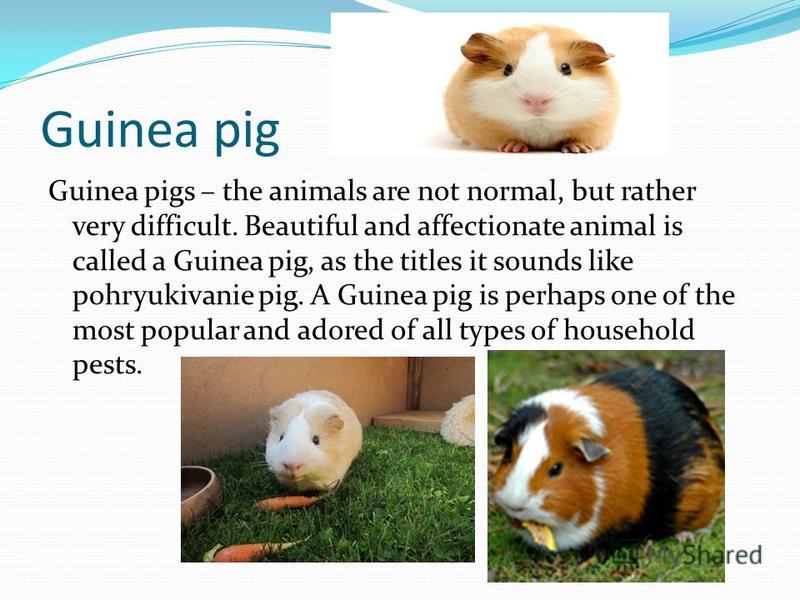
Jayde Darton
5 Stars All The Way!
Fantastic vets! Staff are so helpful and friendly. Vet’s are brilliant, they show so much love and compassion to our animals. 5 stars all the way!!
Nayre Manookain
A Huge Thank you
I just want to say a huge THANK YOU to the gang at Murdoch who helped my family and stimmy Cindy. It was a very stressful time and they assisted us with ease! Pricing was also more than reasonable which we were very grateful for. Thank you guys again, my noodle is now on the mend all to you guys.
Brook Oliver
Excellent Service, Caring and Professional Advice
Excellent service, caring and professional advice, and very good handling for our pet bird, on our first visit today at The Unusual Pet Vets, Jindalee. Very helpful, and they also provided further reading for us via email after our appointment regarding a few things we asked about. All staff were lovely and friendly – from the initial phone booking (you can do internet bookings too) to and including the consult.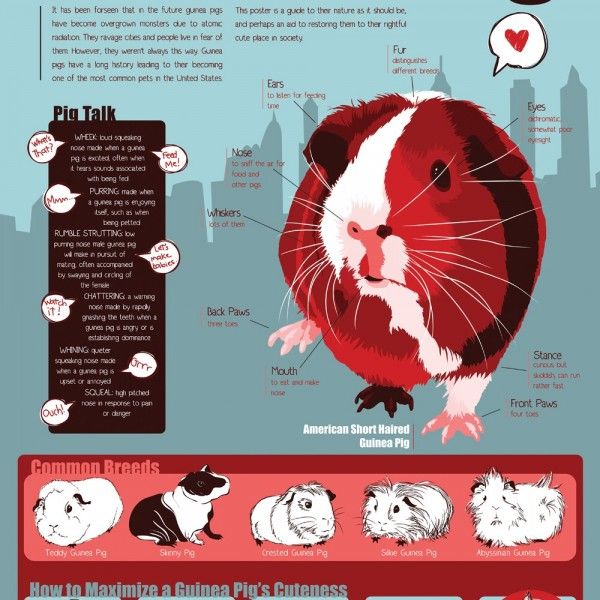 Thank you very much – we’ll definitely be back! Highly recommend.
Thank you very much – we’ll definitely be back! Highly recommend.
Lisa Hack
Received the Best Service
Received the best service from Dr Sasha at the Sunshine Coast clinic. She taught me so much in such a kind manner and was very gentle to my Guinea pig. She then followed up by emailing further information on Guinea pig general care. Highly recommend!
Kate Hunter
Amazing and Caring Staff
Amazing and caring staff at the Ferntree Gully Clinic. Our baby rat was not well, and they always made time to help and support her. Very knowledgeable and compassionate. Would highly recommend and absolutely will use again. Thank you to everyone at Ferntree Gully for being there for us and Tabby.
Vicki Freedman
See all reviews
Baby guinea pig care – The Guinea Pig Manual
If you find yourself in a situation where you would need to take care of a newborn or extremely young guinea pigs on your own, it is essential that you learn the following tips. The good news here is that guinea pigs mature relatively quickly, so you should have a “responsible”, self-reliant guinea pig in just a few days.
The good news here is that guinea pigs mature relatively quickly, so you should have a “responsible”, self-reliant guinea pig in just a few days.
However, as a general rule, in an ideal situation, newborn guinea pigs should not leave their mother’s side for at least 3 weeks.
Baby Guinea Pig Diet
The first week of life is critical. Every few hours for the first few days, you should hand-feed the baby guinea pig: mesh pellets or supplement powder, and if you have grown guinea pigs, also add a fecal pellet or two to the mix (there are good bacteria necessary for digestive health in there).
The adult guinea pig diet and the baby guinea pig diet are generally the same, with only one important exception: The Calcium. Baby guinea pigs need more of it in order to properly develop their bones. As baby guinea pigs enter the world with fully formed teeth, they are fully capable of eating solid food, so the extra calcium can be provided by the alfalfa hay and pellets.
There should also be enough Vitamin C in their diet. For more detailed info about guinea pig diet, please read our guinea pig eating page.
Proofing the Guinea Pig Cage
Is the water bottle placement appropriate for a baby guinea pig? If too high, lower it down so the pup can comfortably reach and sip from the bottle’s sipper tube.
Are the cage bars too wide apart to present a potential risk? Baby guinea pig could squeeze between bars and get stuck, or run away.
The cage should not be placed on the direct sunlight, or near intensive air flows or drafts.
The cage bedding should be cleaned more frequently – at least twice a week, or when it is obvious that it needs cleaning. A dirty cage bedding is a potential health hazard, and young piggies are even more susceptible to certain illness and diseases.
Quiet Please!
Guinea pigs can be very sensitive to loud noise, so provide a quiet environment for your baby guinea pig(s), at least for the first few weeks of their lives.
A Hiding Place
Make sure to provide your guinea pig with an additional shelter within the guinea pig cage, or a hiding place, or a hide-out spot (igloo, small wooden box, anything will do, really). This “safe house” will make them feel more safe.
Beware of The Early Maturity
Male guinea pigs become sexually active around 3 weeks of age. If you want to avoid potential new pregnancies, separate your guinea pigs by their gender before the week 4.
For optimal social development, it is recommended to pair a young guinea pig with one older guinea pig that is the same gender.
Socializing
In order to become more comfortable with human interaction, you should handle your young guinea pigs fairly often. Slow and gentle movements, calm and gentle voice. However, don’t keep them away from their mother for too long (if there is a mother). Don’t try to handle a baby guinea pig when they are sleeping or nursing.
The fastest way to build trust between you and your guinea pig definitely goes through the stomach: bribe your guinea pig with food and treats.
Any thoughts or experiences? I would love to hear from you on the forum!
Development and care of newborn guinea pigs
Newborn guinea pigs are fluffy, inquisitive creatures that quickly master new living conditions right from birth. Before deciding to breed fluffy rodents, the owner of the animal is advised to clarify all the possibilities for selling cubs, most often small animals are purchased to feed snakes or birds of prey.
The birth of guinea pigs can be planned when the owner decides to get offspring from a pet at home or unexpected due to careless keeping of heterosexual individuals, or the acquisition of a pregnant female. In any case, the care and maintenance of cute newborn guinea pigs and a nursing mother falls on the shoulders of the owner, who must be prepared for possible artificial feeding of babies and possible health problems of the female who has given birth and her children.
Contents
- 1 What newborn guinea pigs look like
- 2 What to do if a guinea pig has given birth
- 3 Video: newborn guinea pigs
- 4 Development of newborn guinea pigs by day
- 5 Video: how a guinea pig grows up to 1 month
- 6 When to take babies in your arms
- 7 When to give away guinea pigs after birth
- 8 Caring for newborn guinea pigs
- 9 What to feed a baby guinea pig
- 10 Video: newborn guinea pigs
What newborn guinea pigs look like
Unlike the hairless, blind and completely defenseless cubs of domestic rats and hamsters, small guinea pigs are born small copies of their parents.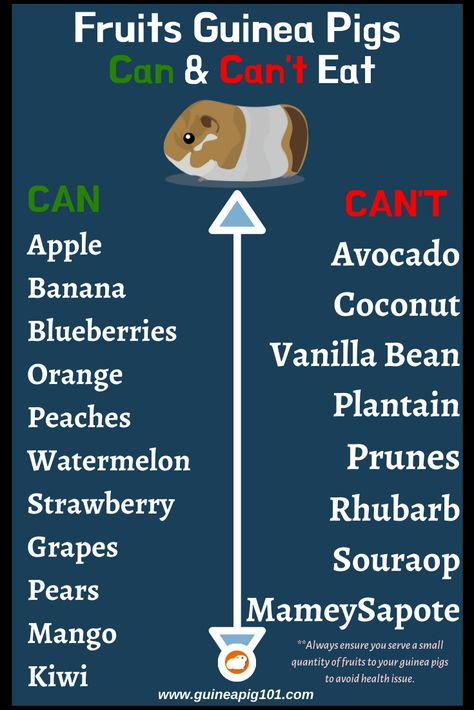 The body of the babies is covered with smooth soft fur. Cubs have cut incisors, open eyes, tiny claws and excellent hearing. Trusting and courageous children of guinea pigs actively move around the cage almost from birth. Despite the fact that small guinea pigs look like adults, babies are in great need of maternal care and breastfeeding. Babies should not be separated from their mother before they are a month old.
The body of the babies is covered with smooth soft fur. Cubs have cut incisors, open eyes, tiny claws and excellent hearing. Trusting and courageous children of guinea pigs actively move around the cage almost from birth. Despite the fact that small guinea pigs look like adults, babies are in great need of maternal care and breastfeeding. Babies should not be separated from their mother before they are a month old.
Guinea pig babies are born weighing 45-140 g, depending on breed and litter size. The weight of a newborn less than 40 g is considered critical, most often babies die. The female guinea pig does not care for or feed sick or weak children. It is not possible to save such a cub on its own.
Guinea pigs produce a litter of 1-5 babies. Primiparous females often give birth to only one cub with a sufficiently large weight.
A breastfeeding mother has only one pair of active teats, but guinea pig milk is rich in fat and nutrition.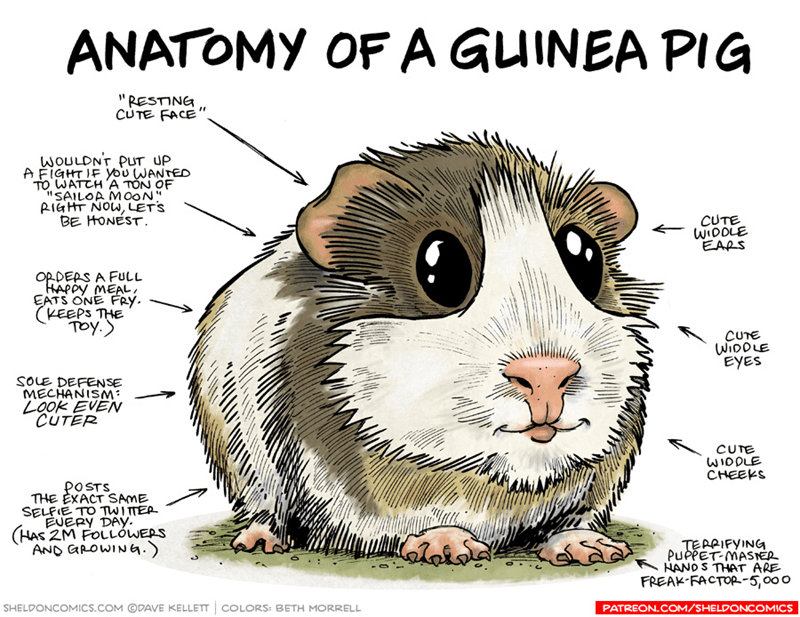 Therefore, in the absence of problems, the female manages to feed any number of newborns, the cubs suck milk in turn.
Therefore, in the absence of problems, the female manages to feed any number of newborns, the cubs suck milk in turn.
What to do if the guinea pig gave birth
One day after birth, it is necessary to examine the litter in the absence of the female and remove from the cage non-viable and inactive cubs with low weight, which are doomed to death.
This procedure must be carried out with clean hands, washed with laundry soap, without touching live piglets. Cleaning the cage in the first three days after birth is highly discouraged.
If before birth the male was in a cage with a pregnant female, it is urgent to move him to another dwelling. Males are capable of biting newborn cubs. A female who has just given birth within a day after giving birth can become pregnant again, which can cause the death of a newborn litter or female. Experts recommend mating guinea pigs for offspring no more than twice a year.
Quite often, females who have just given birth lack maternal instinct or experience postpartum shock.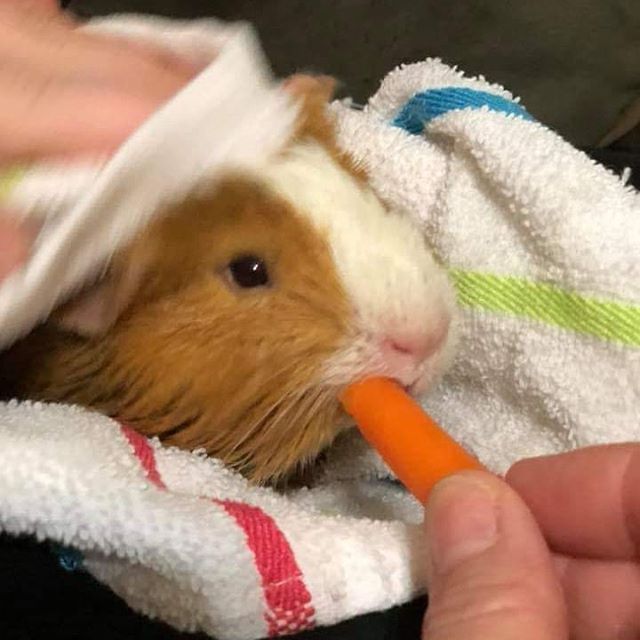 In which the mother tries to protect herself from the kids, hides in the corner, is in a depressed state.
In which the mother tries to protect herself from the kids, hides in the corner, is in a depressed state.
To save newborns in such a situation, it is necessary to remove the adult from the cage and try to calm the frightened animal and offer favorite treats. During the absence of the mother, a heating pad must be placed in the cage with the cubs in order to avoid hypothermia and the death of small pigs. Most often, an adult comes to life and becomes a caring mother.
Guinea pigs have 1-5 pupsIn case of multiple litters or insufficient production of breast milk, it is recommended to introduce cow, goat milk or cream into the diet of a nursing guinea pig to replenish the necessary nutrients in the body of the female.
Video: newborn guinea pigs
What to do if a guinea pig dies during childbirth
Sometimes a female guinea pig dies during childbirth. An ideal option for orphaned babies is considered to be a nursing guinea pig with cubs of the same age.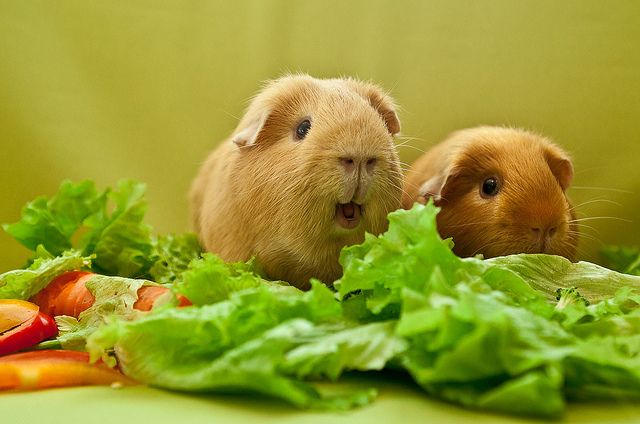 In order for an adult to accept babies into the family, it is necessary to remove the female from the cage, rub the wool of the newborn with sawdust from the cage and place it in the center of the brood. Sometimes all babies are treated with camphor oil so that the female cannot smell someone else's smell. After 20-30 minutes, you can put mommy back, who will be happy to feed new family members.
In order for an adult to accept babies into the family, it is necessary to remove the female from the cage, rub the wool of the newborn with sawdust from the cage and place it in the center of the brood. Sometimes all babies are treated with camphor oil so that the female cannot smell someone else's smell. After 20-30 minutes, you can put mommy back, who will be happy to feed new family members.
If it is not possible to find a lactating guinea pig, the responsibility for feeding the babies lies with the owner.
A newborn guinea pig is fed every 2 hours during the day and 3 hours at night.
Artificial rearing of pups is done by drip method with warm 10% cream with the addition of probiotics from an insulin syringe without a needle or with a squirrel brush. Cream can be replaced with powdered infant formula.
Babies feed milk every 2-3 hours At the age of 7 days, milk-free baby porridge can be carefully introduced into the diet of piglets. From birth, tiny animals in a cage should have a bowl of oatmeal flakes, pieces of apple and carrots, and hay so that the kids get used to adult nutrition.
From birth, tiny animals in a cage should have a bowl of oatmeal flakes, pieces of apple and carrots, and hay so that the kids get used to adult nutrition.
Orphaned piglets are deprived of their mother's care, which consists in licking the abdomen and anus to stimulate the emptying of the bladder and intestines. In order to avoid the death of babies from peritonitis, due to rupture of the wall of the bladder or intestines, the owner of abandoned babies must, after each feeding, perform a very gentle massage of the tummy and anus with a wet swab dipped in boiled water or vegetable oil.
Development of newborn guinea pigs by day
Newborn guinea pigs grow quite quickly. Regardless of the initial weight at birth, a single litter calf can be born with a weight of about 100 g. On the first day, the body weight of a piglet remains unchanged. On the 2nd day after birth, the weight of the babies increases by 1 g. In the future, provided there is adequate nutrition and the absence of pathologies, the guinea pig cubs gain 3-4 g in weight daily. On the 5th day from the date of birth, weight gain is about 25-28 g, at the age of 2 weeks, body weight doubles relative to the value at birth.
On the 5th day from the date of birth, weight gain is about 25-28 g, at the age of 2 weeks, body weight doubles relative to the value at birth.
At 8 weeks old, the young should weigh about 400 g, after which growth activity decreases.
A guinea pig cub becomes an adult at the age of 6 months, by which time the weight of males is 900-1200 g, females - 500-700 g. months.
Video: how a guinea pig grows from birth to 1 month
When to hold babies
It is not advisable to touch cute piglets before a week of age. A nursing female may refuse or kill a cub with a strange smell. There is also a high probability of damage to the thin bones or internal organs of the baby in case of an accidental fall from the hands.
The little guinea pig is a very trusting but shy creature. It is highly recommended not to make harsh sounds in the presence of tiny animals. Frightened in childhood, animals remain shy or aggressive even into adulthood.
Frightened in childhood, animals remain shy or aggressive even into adulthood.
Week-old piglets should be regularly stroked on the back with a finger, fed with treats from hands, without taking them out of the cage. Such manipulations accustom piglets to the smell and voice of a person, forming a trusting relationship.
At the age of two weeks, you need to often take the babies in your arms, monitoring the reactions of the babies.
Small guinea pigs must not be handled by the back. To take a tiny baby, you must very carefully bring your fingers under the tummy of the animal. A brave young guinea pig can easily enter the palm of its owner on its own. It is recommended to carefully pull the baby out of the cage and play with it. Do not frighten the baby with sudden movements or sounds, try to catch a small rodent. If the animal meows or shakes, it is worth returning the baby to the cage until the next time.
When can guinea pigs be given away after birth?
Lactation in guinea pig lasts 21 daysEarly weaning of piglets from lactating pigs adversely affects the health and growth of small animals. Removing cubs older than 2 months negatively affects the health of the female, who is forced to feed her already grown babies with milk. It is recommended to remove the most well-fed babies from the brood first, immediately forming heterosexual groups of young animals. Young males are separated from their mother at the age of one month in order to avoid covering an adult female with them.
At the age of one month, small guinea pigs can be given to new owners. Until this age, it is vital for young rodents to be near their mother for the correct formation of all organ systems, immunity and necessary skills.
Caring for newborn guinea pigs
Guinea pigs are often good mothers who enjoy taking care of their newborn offspring. The owner of a fluffy brood needs to properly care for the female and her babies, creating optimal conditions for the growth and development of funny babies:
- The mother and calf cage must be large enough with a minimum distance between the bars to avoid damage to the delicate legs of the babies;
- it is recommended to remove all ladders, shelves and hammocks from the cage;
- a few days after birth, it is necessary to wash the cage daily with a change of sawdust or hay.
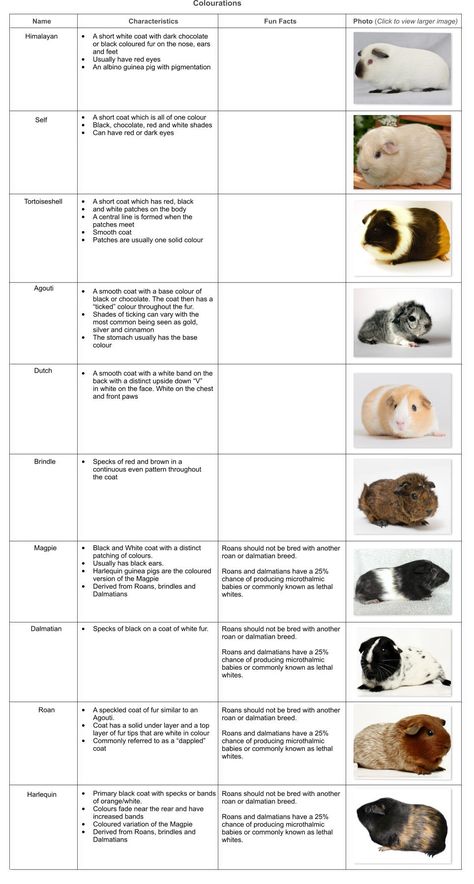 Disinfection of the cage and feeders is recommended once a week;
Disinfection of the cage and feeders is recommended once a week; - the temperature in the room with animals should be at least +18 degrees to avoid hypothermia for babies, who often have wet fur after being licked by their mother;
- it is necessary to exclude direct sunlight and drafts on the cage with cubs;
- the cage must be equipped with a sufficient number of drinkers with clean drinking water and new feeders with food designed for the lactating female and her offspring;
- the atmosphere in a room with babies should be quiet and calm, newborn guinea pigs are very afraid of sudden sounds and movements.
What to feed your baby guinea pig
Newborn guinea pigs eat their mother's very fatty milk for the first three weeks of their lives. From the 3rd, inquisitive piglets are already eating adult solid food. Therefore, the cage should always have a bowl with cereal flakes, herbal granules, compound feed and nuts in sufficient quantities.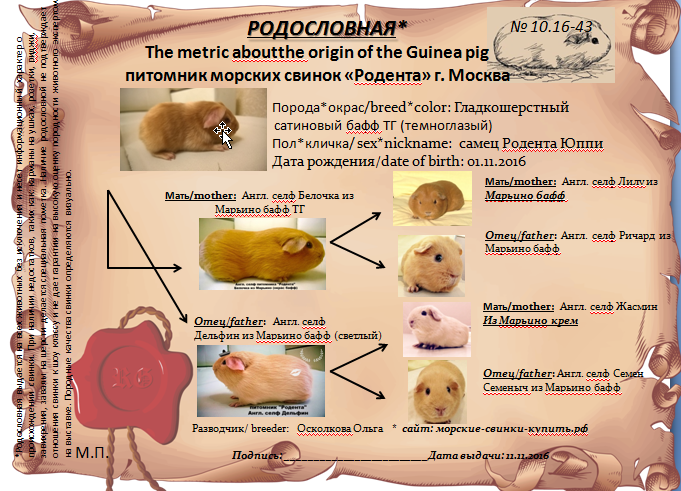 Babies need to be fed only fresh and carefully selected products. Remove uneaten food from the cage daily to avoid poisoning the cubs.
Babies need to be fed only fresh and carefully selected products. Remove uneaten food from the cage daily to avoid poisoning the cubs.
During feeding, guinea pig babies eat a small amount of adult litter, rich in B and K vitamins. These substances are necessary for the proper growth and development of young animals.
In a cage with a nursing mother and babies, there should always be special hay in sufficient quantities necessary for grinding the teeth and intestinal motility of the animals. Hay should be dry and smell good. Wet or rotten hay can kill the entire brood.
Young guinea pigs enjoy eating vegetables and fruits, which are given to funny rodents in limited quantities: cabbage, carrot, apple, lettuce, bell pepper, summer season cucumber.
Guinea pig cubs are touching and affectionate fluffy lumps, which, after getting used to a person, bring many joyful and cheerful minutes from communicating with trusting and nimble kids.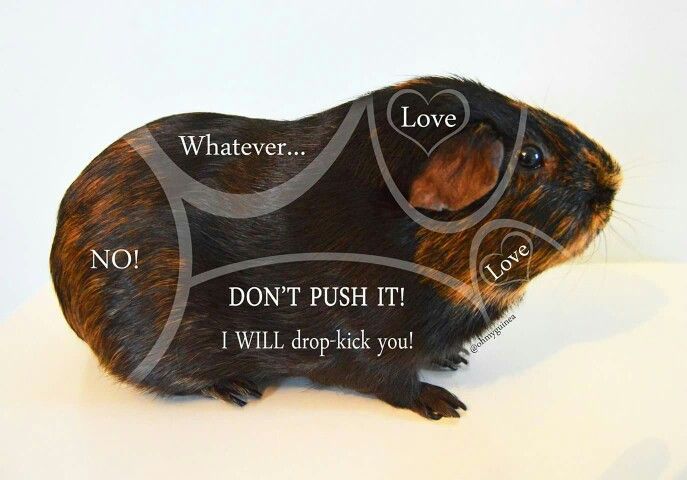
Video: newborn guinea pigs
Guinea pig care - care, feeding and treatment
Guinea pigs are incredibly sociable furry pets. They can live up to 9 years, with an average of 6-8 years. Keeping guinea pigs is not difficult, but some rules must be strictly followed in order to keep guinea pigs healthy.
How to Care for Guinea Pigs
Keeping guinea pigs in aquarium tanks or small plastic cages is not recommended due to poor air circulation and because the plastic isolates the guinea pig from smells and sounds.
General rule: the cage should be as large as possible, but not less than 60 x 60 cm per gilt. The bottom of the cage must be smooth so that the guinea pig does not hurt its paws.
Pay special attention to the bedding. Paper towels, sawdust, wood litter, or hay can be used as litter for guinea pigs.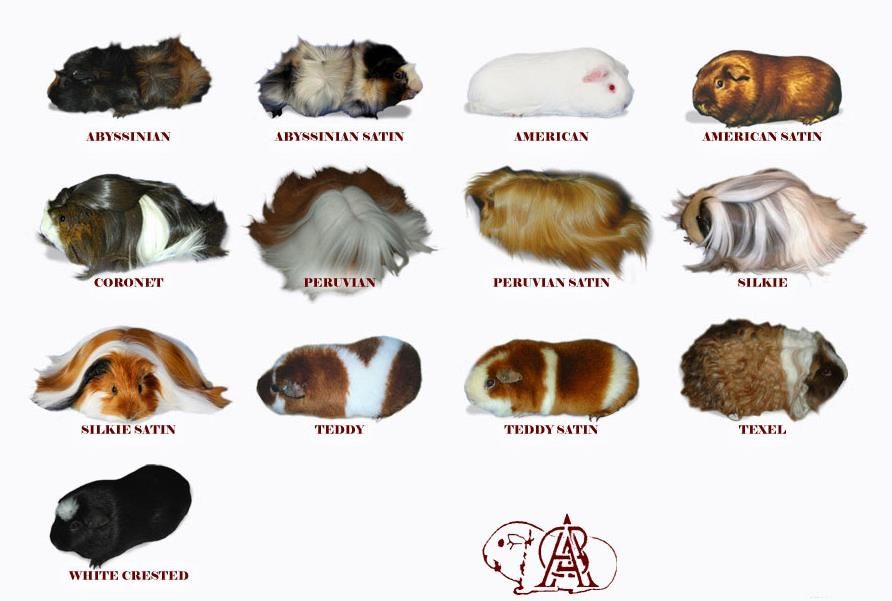 The choice of filler depends on the preferences of the owner and the size of the cage.
The choice of filler depends on the preferences of the owner and the size of the cage.
In the pet shop you can buy sawdust in granules and regular sawdust. Granular ones retain the smell the longest, they can be mixed with simple ones so that corns do not form on the pet's paws. To avoid the need for treatment of guinea pigs, the litter should be soft, without small particles and dust that can get into the animal's nose.
Be sure to hang a special drinker on the wall of the pig's cage so that the animal always has fresh water. You can put a heavy ceramic drinker that the pig cannot accidentally turn over.
Keeping guinea pigs requires regular cleaning of the cage. This is essential to the health of the guinea pig and its owner. The fact is that the accumulation of ammonia can affect the respiratory system of the pet.
Keep the guinea pig's cage away from drafts, direct sunlight, or near heaters.
Small fluffy rodents are very afraid of overheating.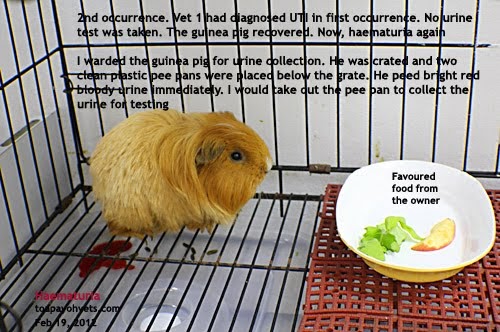 Just a few minutes in direct sunlight can be so damaging that a guinea pig needs urgent veterinary treatment. Drafts and low temperatures are just as harmful to this animal.
Just a few minutes in direct sunlight can be so damaging that a guinea pig needs urgent veterinary treatment. Drafts and low temperatures are just as harmful to this animal.
Guinea pig needs to move more often. That is why daily walks around the house or in the yard are recommended. But the walking area must be fenced off so that the pig is always in sight. keeping guinea pigs alone is not recommended. If you still have one pet, try to take the pig in your arms several times a day and talk to it. However, it is unlikely that anyone will deny themselves such pleasure, since guinea pigs are very funny and love to talk in their own, amusing language.
Daily exercise will help keep your guinea pig in good health. You can make mazes out of pipes or partitions and lay out small pieces of goodies. If the size of the cage allows, then you can make a second floor with a platform.
Wheels or plastic balls are not recommended for guinea pigs as they may injure their spines or paws.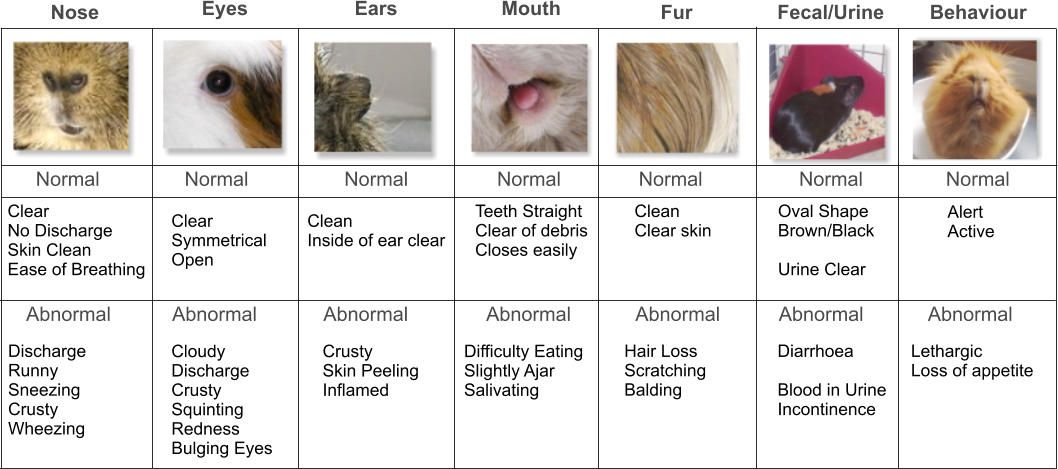
Food for guinea pigs
Proper care of guinea pigs is, of course, also a balanced diet.
Can guinea pigs be given table food? No matter how delicious your food may seem, never share it with your pet. Very often, guinea pigs come to the veterinarian for treatment precisely from such gifts. By nature, these animals are strict vegetarians. They need food rich in fiber. Moreover, guinea pigs eat often and little by little.
The basis of the guinea pig's diet should be hay and green fodder. In the summer, green fodder should prevail. These rodents are very fond of leaves and flowers of dandelions, yarrow, alfalfa, timothy, clover. You need to collect herbs only in ecologically clean places. But it should be noted that in early spring, green food is still too poor in the fiber necessary for guinea pigs and rich in protein, so this food should be given to your pet in limited quantities.
Guinea pig hay must not be damp, dusty or odourless. Freshly dried hay can also harm the animal - and then the guinea pig will need to be treated by a veterinarian.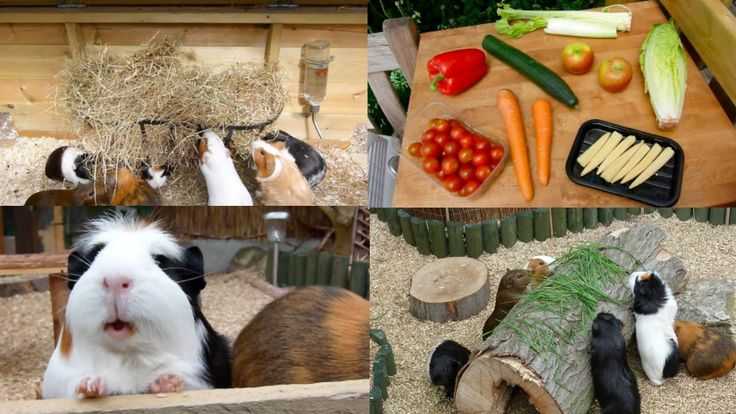 For food, a rodent should be given hay, which is at least 1.5 months old.
For food, a rodent should be given hay, which is at least 1.5 months old.
The body of guinea pigs is not able to synthesize vitamin C, so it is necessary that the animal's diet includes at least 16 mg of vitamin C daily. Deficiency can be replenished by regularly treating your pet with Romaine lettuce, parsley. Rich in vitamins necessary for guinea pigs, carrots. Sometimes you can treat your pet with a small piece of an apple.
Do not feed aged or spoiled food to gilts. Avoid treats with nuts, seeds, dried fruits. Do not feed dairy or meat products to guinea pigs (guinea pigs are herbivores). Do not feed rabbit food as these foods are not fortified with vitamin C. Can guinea pigs be fed cabbage? Avoid or limit guinea pigs' consumption of cruciferous foods such as cabbage, bok choy, broccoli, which can cause gas and bloating in your pet.
Pay special attention to pet water. The water tank must be thoroughly rinsed daily and replaced with fresh water.
Diseases and treatment of guinea pigs
Since the disease progresses rapidly in guinea pigs, it is worth knowing what symptoms you need to pay attention to and immediately go to the veterinary clinic for treatment of the guinea pig.

